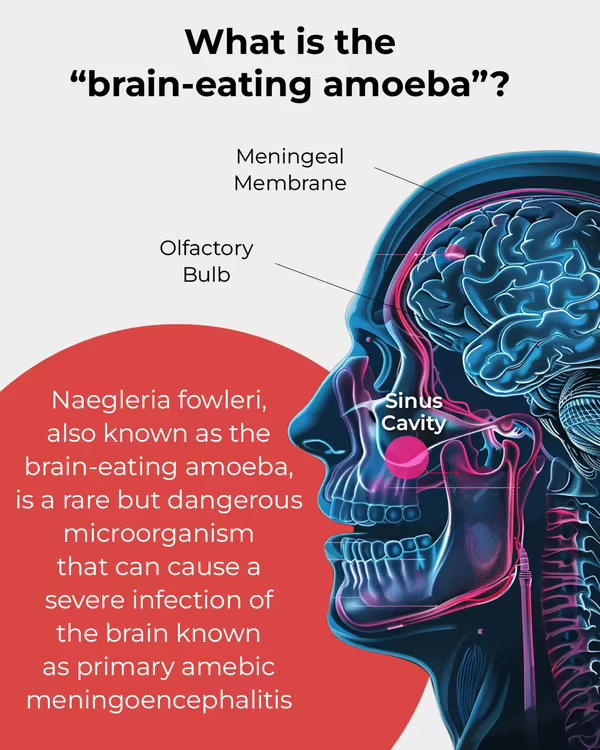Context:
Central Kerala recently reported first case of Primary Amoebic Meningoencephalitis (PAM), a rare but deadly infection caused by a free-living amoeba. This marks a continuation of a concerning trend, with Kerala reporting over 150 cases in 2025, primarily from Kozhikode, Malappuram, Thiruvananthapuram, and Kollam districts.
About Amoebic Meningoencephalitis:
Amoebic Meningoencephalitis (PAM) is a rare central nervous system infection caused by the Naegleria fowleri amoeba — often called the “brain-eating amoeba.”
· It thrives in freshwater bodies such as lakes, ponds, and poorly chlorinated swimming pools.
· Infection occurs when contaminated water enters the nasal passages, allowing the amoeba to travel through the olfactory nerve to the brain.
Epidemiology and Spread:
The infection is non-communicable, it cannot spread from person to person.
· It develops within 2–7 days after exposure and usually leads to death within one to two weeks due to its rapid onset and difficulty in diagnosis.
Symptoms:
Common symptoms resemble viral meningitis in the early stages:
-
- Severe headache
- Fever and nausea
- Vomiting and neck stiffness
- Altered mental status
- Seizures and coma in advanced stages
- Severe headache
Because symptoms mimic other brain infections, delayed diagnosis often leads to fatality.
Preventive Measures:
1. Avoid nasal exposure to untreated or warm freshwater.
2. Use boiled or distilled water for nasal cleansing (e.g., in neti pots).
3. Ensure adequate chlorination of public water sources and swimming pools.
4. Prompt diagnosis and reporting of suspected cases to health authorities.
5. Public awareness campaigns on safe water practices.
Medical Management:
-
- No fully effective treatment exists, but early use of antimicrobial drugs such as amphotericin B, miltefosine, azithromycin, and rifampicin has shown limited success.
- No fully effective treatment exists, but early use of antimicrobial drugs such as amphotericin B, miltefosine, azithromycin, and rifampicin has shown limited success.
Conclusion:
The recent Ernakulam case underlines the public health challenge of emerging rare infections amid changing environmental and behavioural patterns. While Kerala’s proactive diagnostic approach has improved case detection, there is a need of awareness and preventive behaviour among people for prevention of this rare disease.







